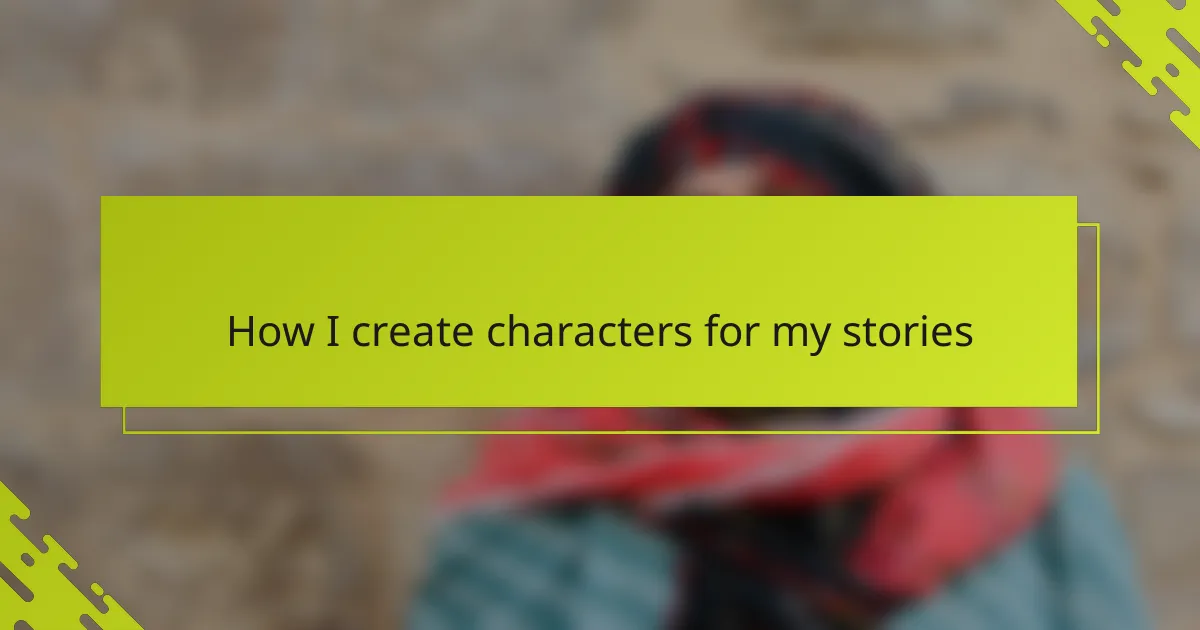Key takeaways
- Character creation involves understanding depth beyond surface traits, focusing on fears, desires, and personal struggles.
- Authentic representation requires careful research and immersion in the personal stories and lived experiences of characters.
- Developing nuanced relationships enhances character growth, especially within the context of queer women’s culture.
- Integrating cultural identities into story arcs adds emotional depth and complexity, making narratives feel alive and resonant.
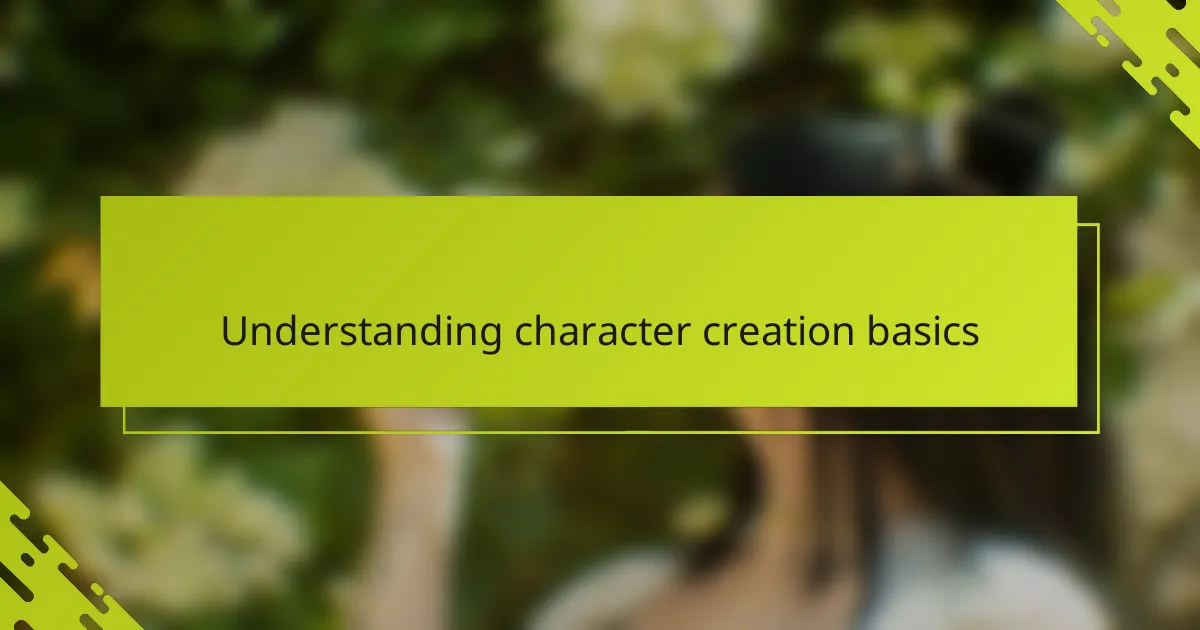
Understanding character creation basics
Creating characters starts with understanding that they need depth beyond just a name or a role in the story. I often ask myself, what makes this character tick? It’s not enough to know their job or hobby; their fears, desires, and contradictions breathe life into them.
For me, the basics of character creation always circle back to empathy. When I sit down to develop a character, I try to step into their shoes, to feel their struggles and joys. Have you ever noticed how people are rarely just one thing? Capturing that complexity is what makes characters feel authentic.
Sometimes, I reflect on characters I’ve loved or connected with in queer women’s culture. Their stories resonate because they embody real emotions and experiences. That connection fuels my passion to create characters who are not just diverse in identity but rich in humanity.
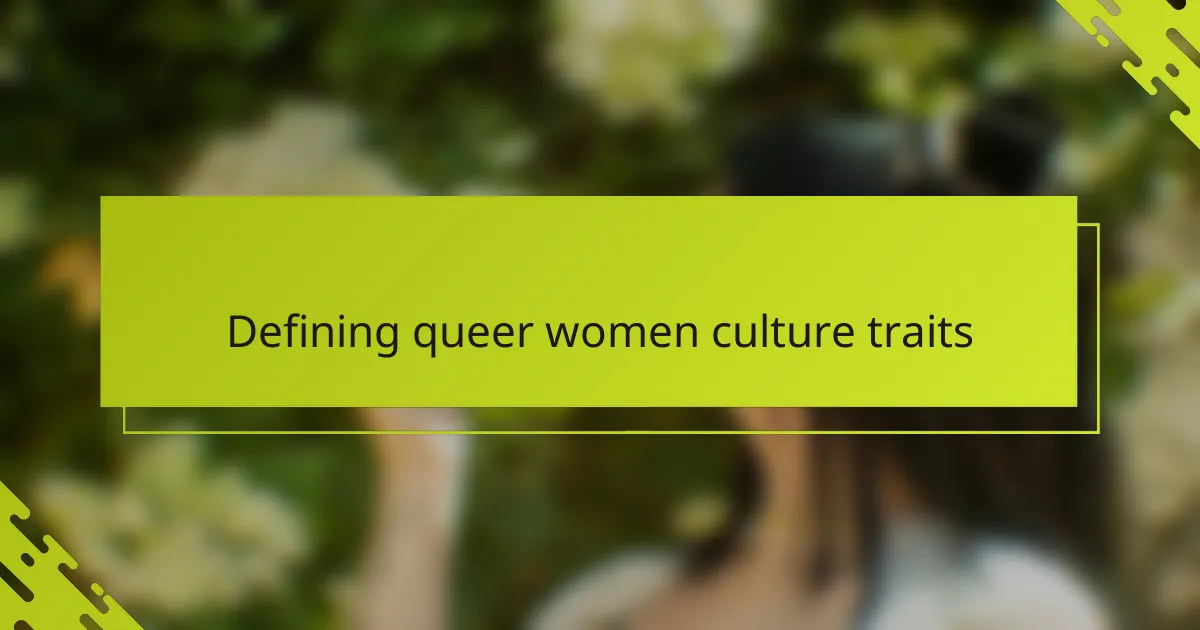
Defining queer women culture traits
Queer women culture carries a beautiful blend of resilience, creativity, and a fierce sense of community. I often find that characters shaped by this culture have a nuanced way of navigating the world—balancing pride in their identity with the complexity of their everyday lives. It’s this interplay that I look to capture in their traits.
When I think about defining these traits, I can’t ignore the importance of fluidity—whether in expression, roles, or relationships. Queer women often defy rigid labels, which challenges me to create characters who embrace ambiguity and celebrate change. Have you noticed how this fluidity can lead to some of the most compelling stories?
In my experience, there’s also a layer of vulnerability interwoven with strength in queer women’s culture. It’s not just about being brave in the face of adversity but also about the tender moments of self-discovery and acceptance. I love portraying that balance, because it makes the characters not only relatable but profoundly human.
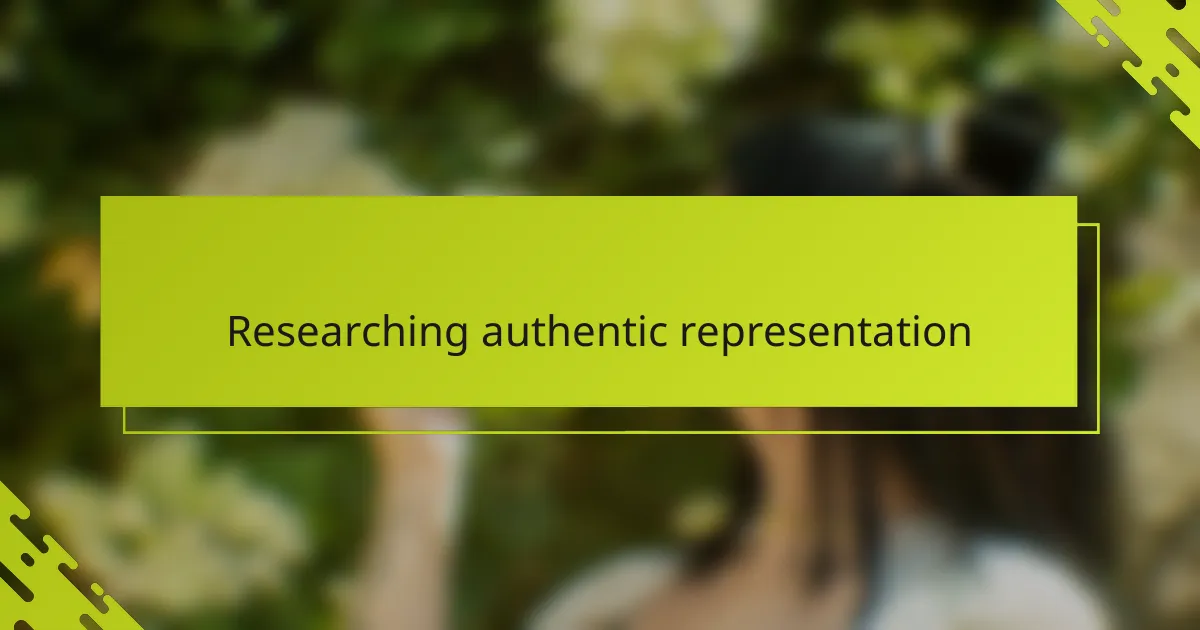
Researching authentic representation
When I research to represent queer women authentically, I don’t rely solely on broad stereotypes or surface-level traits. Instead, I dive into personal stories, interviews, and lived experiences to gather a mosaic of perspectives. Have you ever found that hearing someone’s voice or reading their story reveals layers you wouldn’t have guessed? That’s exactly what I aim to capture.
I remember a time when I wrote a character who identified as non-binary within a queer women’s circle. At first, my portrayal felt flat and generic because I didn’t listen closely enough to actual voices. It wasn’t until I engaged with blogs and conversations that I realized how nuanced their journey really was—the way identity intersects with culture, community, and personal history. This research shifted my whole approach and deepened the character’s authenticity.
Do you think it’s possible to do justice to a community you’re not part of? I believe it is, but only with humility and respect. Researching authentic representation means acknowledging what I don’t know and making space for those truths to shape my storytelling. It’s an ongoing learning process that keeps my characters alive and true.
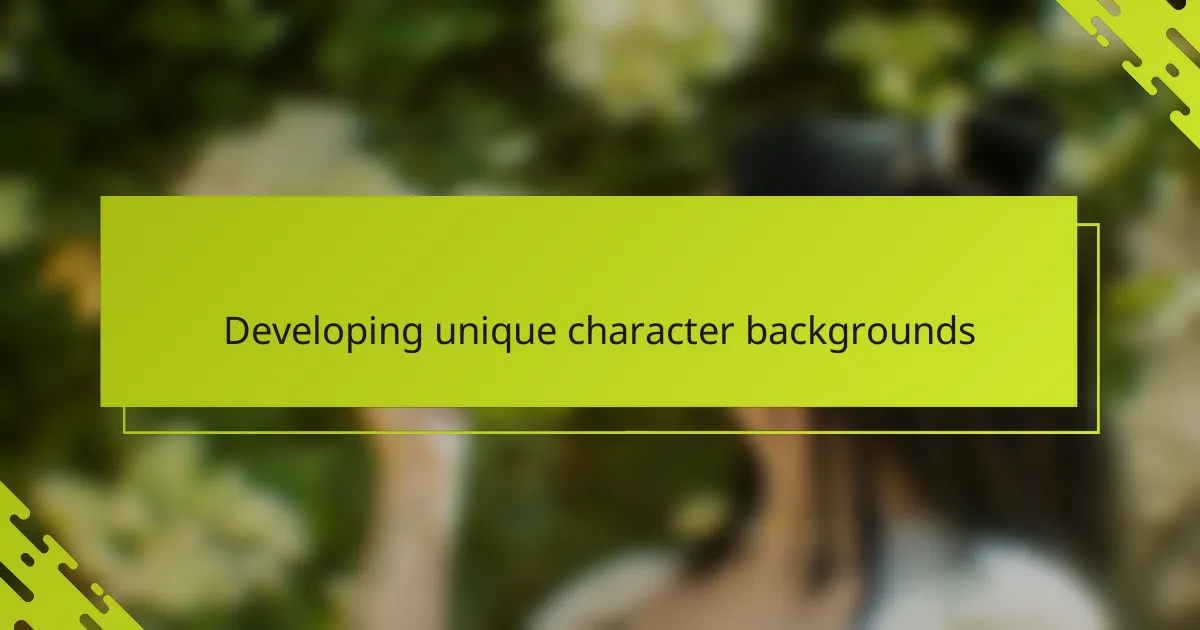
Developing unique character backgrounds
Developing unique character backgrounds often starts with digging into the details that make a person feel real to me—where they come from, what experiences have shaped them, and even what memories they hold close or try to forget. I remember once creating a character whose childhood was marked by a seemingly small but pivotal moment: a family tradition both cherished and complicated. That conflict gave her a depth I hadn’t anticipated until I fully imagined how it echoed in her choices years later.
I like to think about what unseen histories a character carries, the parts of their past that influence how they show up in the present. Have you noticed how our backgrounds, even the messy or contradictory parts, can make us who we are? Bringing those nuances into a character’s story adds layers that resonate emotionally—not just ticking boxes for diversity, but truly honoring complexity.
Sometimes, the process feels like piecing together a puzzle, mixing broad cultural experiences with intimate personal details. For queer women’s stories, this feels especially important, since so many narratives are about navigating identity amidst rich, intersecting histories. When I give my characters these textured backstories, I find that they spring to life in unexpected and meaningful ways.
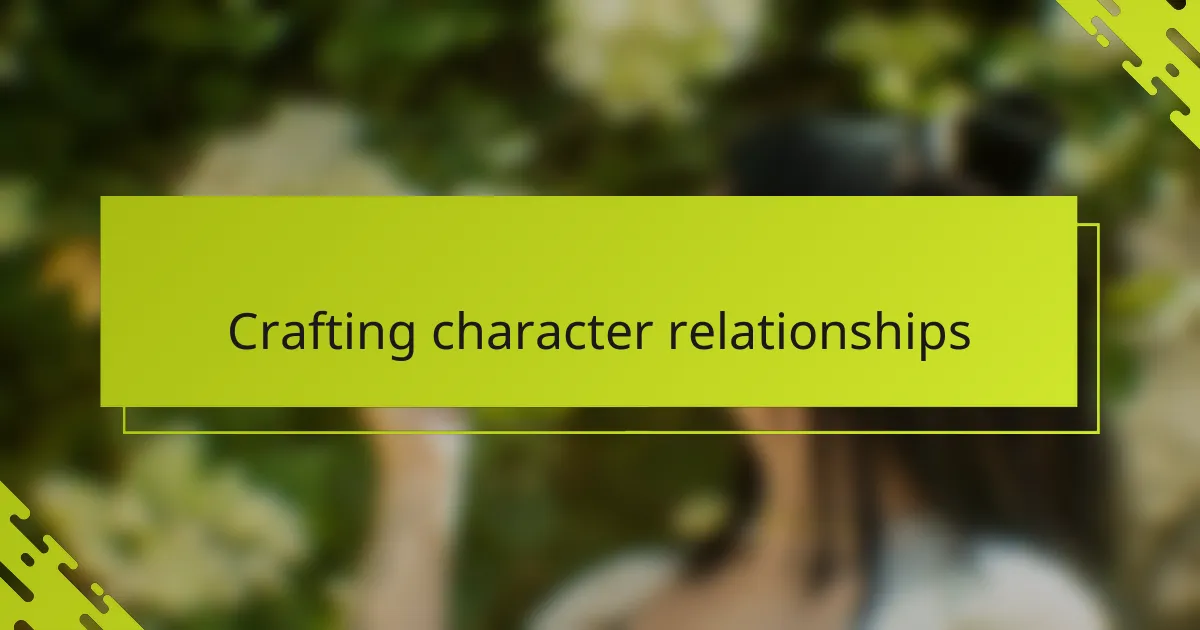
Crafting character relationships
Relationships between characters are where the magic often happens. I remember plotting scenes where two characters’ connection evolved slowly—through shared silences, awkward moments, or small acts of kindness—and that felt more real than any dramatic confrontation. Have you ever noticed how those subtle interactions can reveal so much about who they are?
I pay close attention to the push and pull in relationships, especially within queer women culture where bonds can be layered with history, unspoken understanding, or even gentle tension. It fascinates me how love, friendship, and conflict can intertwine, shaping each character’s growth in unexpected ways. These dynamics keep me wondering: how do these connections challenge or uplift them?
Sometimes, I think about how relationships mirror the fluidity I mentioned earlier. Characters might drift apart, come together in surprising forms, or redefine what intimacy means to them. Crafting these evolving connections feels like telling a story within the story—a dance of emotions and experiences that gives my characters the depth and complexity I strive for.
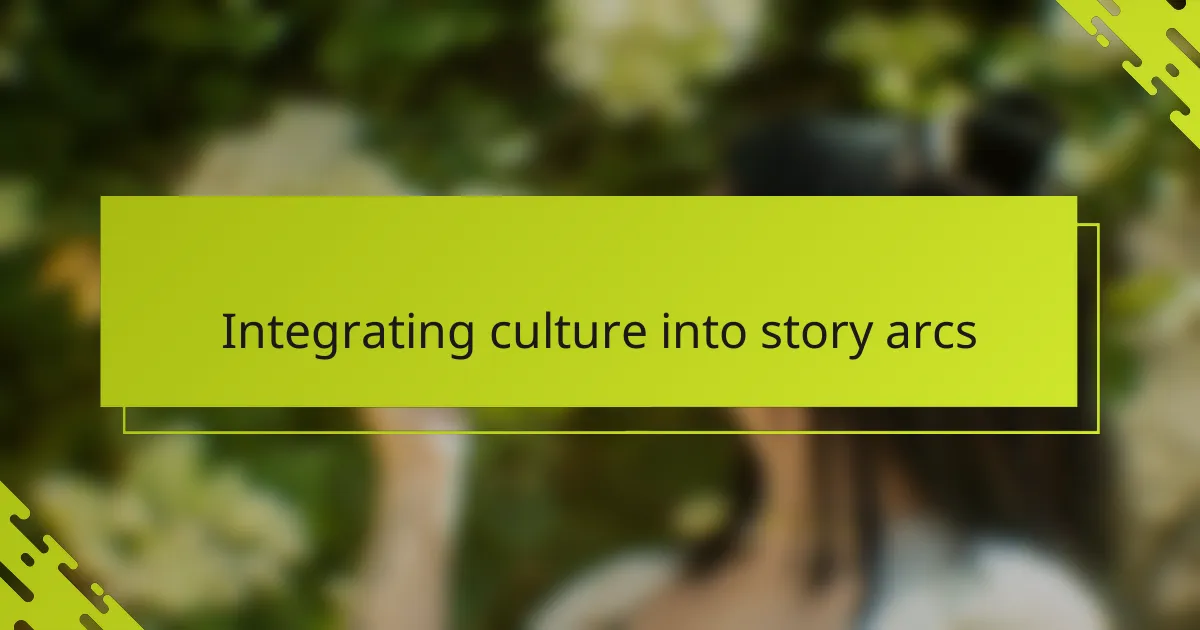
Integrating culture into story arcs
Integrating culture into story arcs means weaving the characters’ cultural identities into the very fabric of their journeys. I often ask myself how a character’s background—especially from queer women’s culture—shapes their decisions and reactions over time. For example, one character’s experience with chosen family influenced how she navigated trust and belonging throughout the plot, making her growth feel rooted and authentic.
I’ve found that culture isn’t just an added detail; it’s a living force that drives conflict, transformation, and resolution. How does a character’s culture create moments of tension or support? When I answered this question in my writing, the story arcs gained layers of meaning that resonated emotionally and made the narrative feel alive.
Sometimes, I’ll start with a cultural theme and let it guide the whole arc—like exploring resilience in the face of erasure or celebrating fluid identity through evolving relationships. These themes become more than background; they pulse through the character’s experiences and keep me connected to the heart of the culture I’m representing.
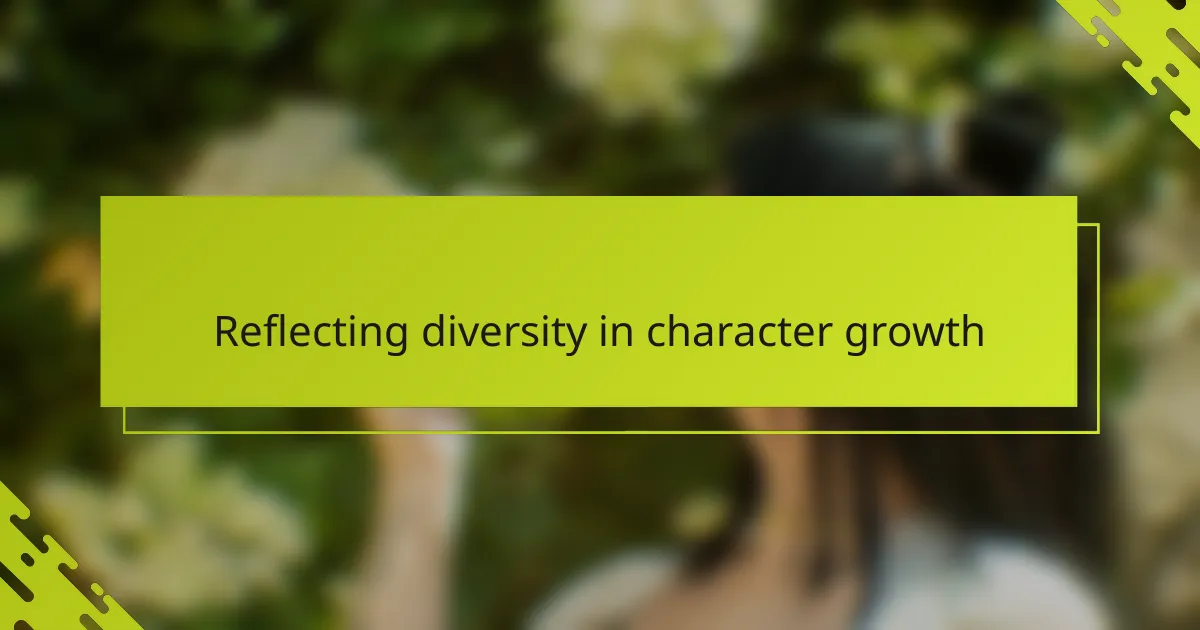
Reflecting diversity in character growth
Reflecting diversity in character growth means honoring the many ways people evolve—especially within queer women’s experiences, where identity and self-understanding are often fluid and ongoing. I’ve noticed that letting my characters’ growth mirror this complexity makes their journeys feel more honest and relatable. Have you ever watched someone change in surprising ways over time? That’s exactly the kind of evolution I want to bring to life.
Sometimes, a character’s growth isn’t linear—it’s messy, full of setbacks and self-discovery. I recall writing a character who struggled with internalized expectations from their community, and as I fleshed out their growth, I realized how important it was to show both their strength and moments of vulnerability. Growth, I found, isn’t just about overcoming obstacles but also about embracing contradictions and transformations that don’t fit a neat narrative.
What makes reflecting diverse growth even more meaningful to me is how it challenges clichés and stereotypes. When I give space for characters to evolve in unexpected ways—shaped by culture, history, and personal truth—I feel like I’m not just telling a story, but opening a window into the richness of queer women’s lived realities. Doesn’t that feel like the deepest kind of storytelling?
